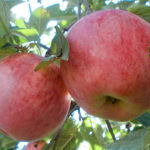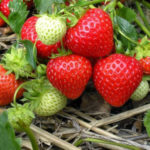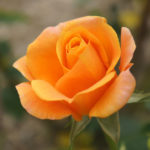Plum variety Peach
Peach is a plum variety of Western European origin with early ripening fruits. Other names: Royal Rouge, Red Nectarine. The exact origin of the variety is unknown. It is possible that it was bred in France or England. The first mention of it dates back to 1830.
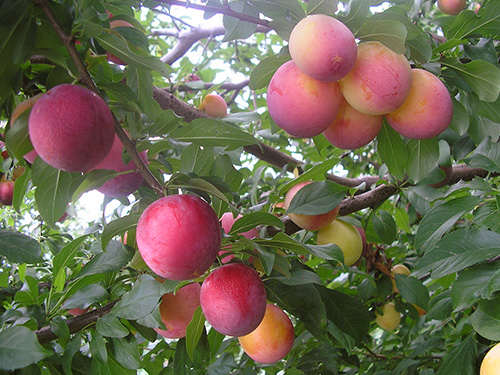
The total area of distribution of the variety throughout the world is small. The variety is zoned in Russia (Stavropol Territory, Dagestan, Ingushetia, Chechnya), Ukraine (Transcarpathian, Nikolaev regions), Azerbaijan, Armenia, Georgia and Moldova.
According to the 1945 census of gardens, the largest share of Persikova trees in the Soviet Union was in the Dagestan Autonomous Soviet Socialist Republic (4.3%), followed by: Crimea (3.9%), Krasnodar Territory (2.8%), Rostov Region (2, 2%), Stavropol Territory (1.2%), Grozny Region (0.3%); the smallest proportion of trees was counted in the Kabardian and North Ossetian ASSR.
Trees of medium height and taller, fast growing at a young age. The crown is rounded or inversely conical, medium-leafy and medium-thickened, in the first years of growth it looks somewhat compressed, but subsequently acquires a more or less spreading appearance. The skeletal branches are thick. The leaves are large, of medium thickness, oval in shape, with a blunt apex, pubescent, painted in a dark green color, along the edge there is a double-clawed serration. Shoots are thick, pubescent, grayish-brown in color. The petioles are thick, short, pubescent, each with a pair of small spherical glands of greenish color. Fruit formations are formed on bouquet branches.
Plum fruits Peach large size (average weight - 45 - 50 g, the largest specimens reach 70 g; height - 4.5 cm, width - 4.5 cm, thickness - 4.0 cm), round or ovoid-oval, slightly flattened at the apex. The groove is shallow, wide, and weakly expressed. The stalks are short (7-10 mm), not thick. The skin is thick, covered with numerous small subcutaneous dots of white color and a waxy bluish bloom. The main color of the fruit is a delicate greenish-yellow, the integumentary color is a thick orange-purple-reddish blush, which occupies most or the entire surface of the fruit. The stone is free, rounded-oval, rather flat, rough, placed in a large inner chamber, separates very well from ripe pulp.
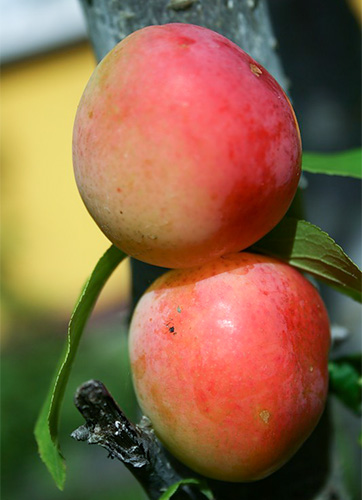
The pulp is golden yellow, elastic in consistency, rather dense, the taste is tender, juicy, very aromatic, sour-sweet. In northern cultivation areas, fruits often grow with a rough and tart pulp. But in general, the taste of this plum is highly rated. A multipurpose variety, widely used in the canning industry and cooking (jams, preserves, compotes, sauces, pie fillings). Fruit transfer well.
Flowering takes place at a later date. Fruit ripening is simultaneous, occurs early - from mid-July to early August (depending on the region of growth). So, for example, in the conditions of the Kuban and Crimea, the fruits of Persikova ripen by mid-July, and in the conditions of the Rostov region and Ukraine - only by the end of July - beginning of August. At the time of fruiting, trees usually enter the 5-6th (and sometimes 7th) year. Young trees bear fruit irregularly and in small quantities. But the yield of mature trees is quite high: at the age of 15 - 20 years, about 50 kg / fowl. Fastening of fruits on the branches is strong, shedding is insignificant.
The winter hardiness of the variety is average. Frost resistance is also average. In the conditions of the Moscow region, Northern Ukraine and even Astrakhan, trees often freeze slightly, so they must be sheltered for the winter.This plum generally suffers severe winters.
The variety is quite resistant to fungal diseases. High resistance to polystygmosis was noted.
Plum Peach self-fruitless. The best pollinators for her are the following varieties: Anna Shpet, Hungarian azhanskaya, Hungarian homemade, Mirabelle Nancy, Renklod Altana, Renklod green.
Ideal growing conditions: fertile, well-moisturized soils.

The main advantages of this plum include: early ripening; very large, outwardly attractive fruits with good and very good taste; plentiful harvests at full fruiting; resistance to diseases and pests.
The main disadvantage of the variety is insufficiently high indicators of winter hardiness and frost resistance.
